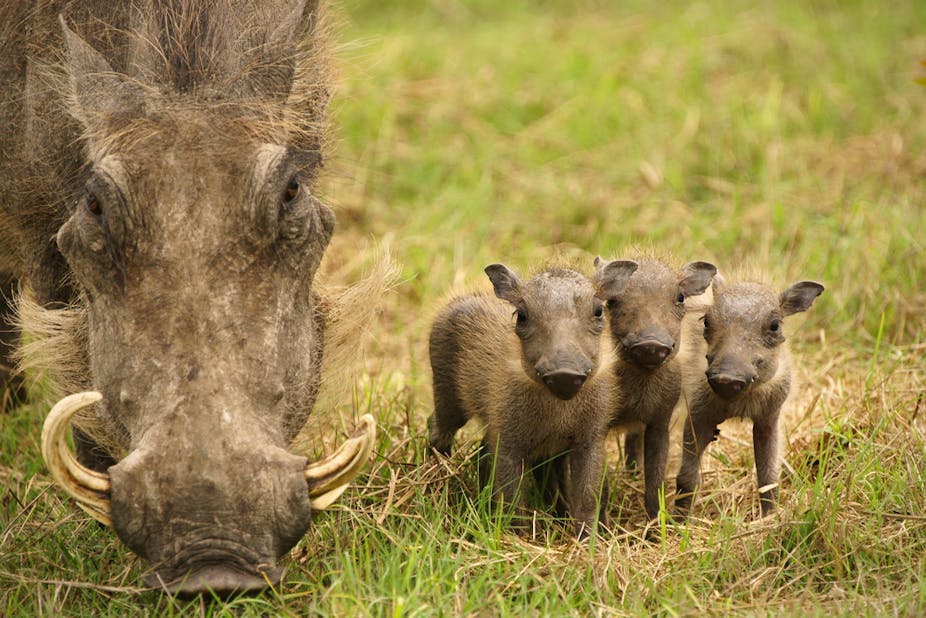Tuberculosis is not just a human disease. Cattle also contract a similar type of bacteria, called bovine tuberculosis. Evidence suggests that it can be transmitted from cattle to humans as well as wildlife and vice versa.
Bovine tuberculosis has been well studied in cattle. This is particularly true in Europe where the disease was very prevalent during the 19th and 20th centuries. It’s estimated that the agricultural sector, globally, has a total loss of more than US$3 billion annually due to bovine tuberculosis. In the UK more than 39 000 cattle were slaughtered after testing positive for the disease in 2016.
The disease made its way into Africa during the 18th and 19th centuries through the importation of cattle from the UK, Europe and Australia. Now wildlife, like lions and wild dogs which prey on potentially infected animals, such as buffalo and warthogs, have also become infected.
But only a few studies have investigated the effect its had on Africa’s wildlife populations. This is starting to change, as the disease’s impact on vulnerable and endangered species like lion, rhino and elephants with human TB are coming under the spotlight.
Lions potentially become infected through eating infected animals and rhino may become infected through environmental spillover, when sharing their grazing with infected animals such as buffalo.
There’s also a new focus on the disease and warthogs, animals that are believed to be potential hosts of bovine TB. I set out to study the role these tusked mammals play when it comes to disease prevalence and to find out their susceptibility to bovine TB.
I found that warthogs have a high disease prevalence in bovine TB endemic regions and that they are susceptible to the disease in the wild. This is important information that will help us to develop effective disease management strategies to reduce and control the spread of bovine TB in South Africa.
Why warthogs?
Putting a number to the warthog population size in South Africa is difficult, but the estimate in 2016 was 22 250. This number means that they aren’t in any way threatened. It also means, they’re an important species when it comes to studying infectious diseases such as bovine TB.
Warthogs are also useful in studying the dynamics of this disease as they’re free-roaming. This means that they aren’t kept in by barriers, like fences, and can move freely between parks, reserves and farm land. This potentially increases their chances of contact with livestock and humans.
To begin my research I first had to be able to accurately determine which individuals were infected and which ones weren’t. I did this by evaluating tests that were developed for other species and then optimised and modified them to develop new diagnostic tests for warthogs. An example was the Quantiferon assay used in humans that we modified to be used in warthogs.
One of my newly developed tests was used to investigate the disease prevalence from historically banked warthog samples. This allowed me to study the extent of the disease in warthog populations. Thus allowing the description of some key risk factors of the disease in warthogs.
The high prevalence of the disease, in some cases higher than 60%, suggests that warthogs are either prone to infection through contact with other infected species, or that they are spreading the disease within their own populations.
My research suggests that the answer is probably something in between the two scenarios. This is because warthogs are frequently seen scavenging on carcasses of other animals, such as buffalo, which are a potential source of infection. In addition, their burrowing behaviour allows for close contact between individuals in a confined spaces which increases the risk of transmission. I have, however, not been able to show yet that warthogs secrete (spread) the disease in to their ecosystem.
I also found that adult warthogs were at a higher risk of having the disease, than either sub-adults or juveniles. There are two possibilities for this:
1) adults have been exposed for a longer period of time; or,
2) younger individuals may die before being tested.
Both these scenarios could increase the risk of spreading the disease to other species indirectly. On the one hand there’s a greater chance of an animal spreading the disease if they have it for a long time. On the other if they succumb to the infection as juveniles, scavengers may become infected who ingest the infected carcass.
Understanding and implications
A deeper dive into the information we’d gathered showed us that warthogs can be used as disease sentinels. Sentinel species are used to monitor the spread of a disease, and its presence or absence. Using sentinels is useful because it means that we don’t need to resort to testing valuable or endangered animals which can be risky.
Warthogs are a perfect sentinel species for a number of reasons. There are lots of them, they’re highly susceptible, they survive the disease and with the help of my new test, have easily detectable signs of infection.
This means that warthogs are an important species in managing the disease.
The next steps will be to determine whether warthogs transmit the disease to other species or does transmission stop at an individual level.

